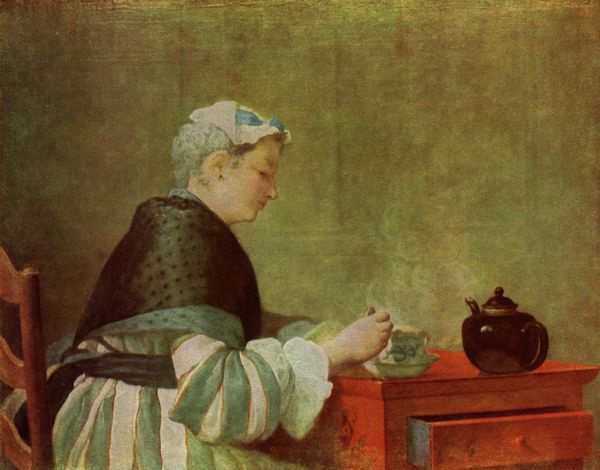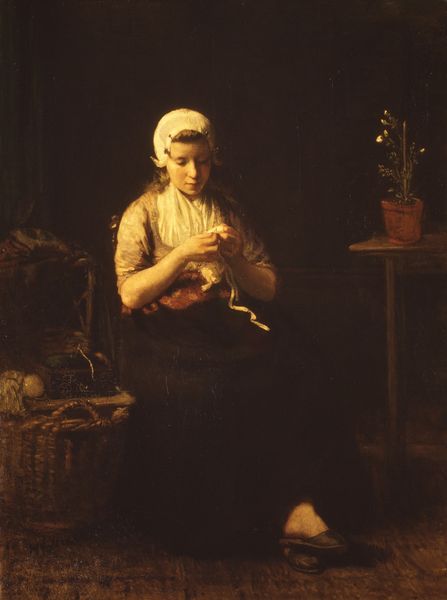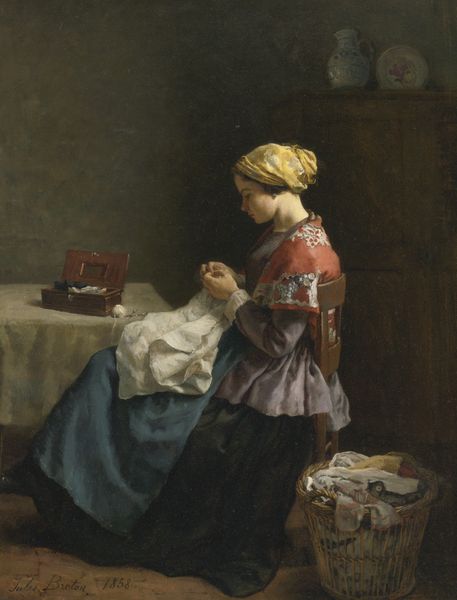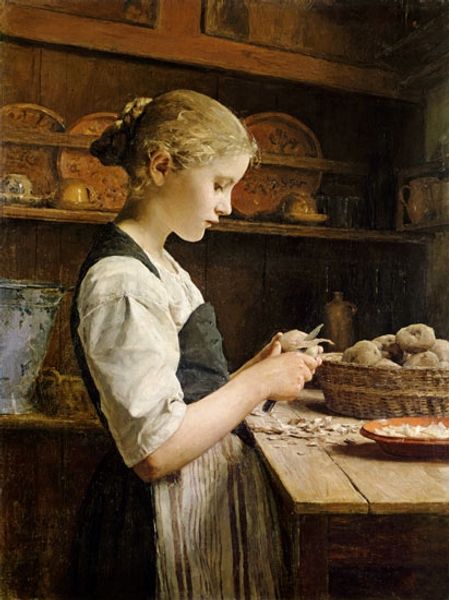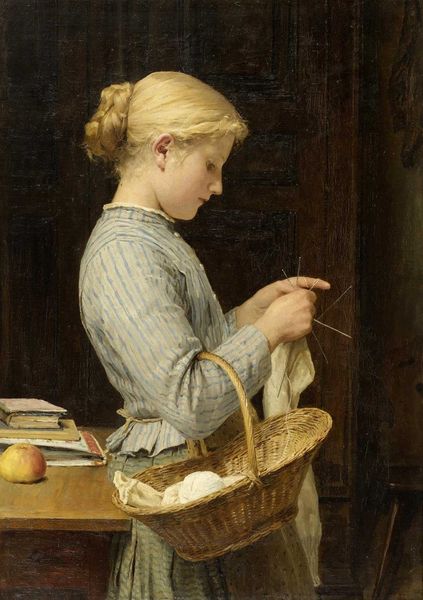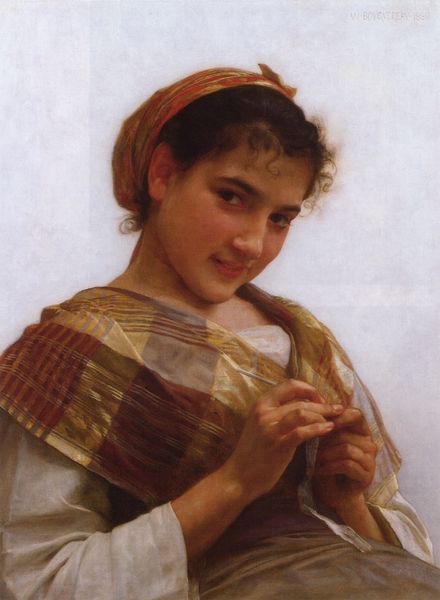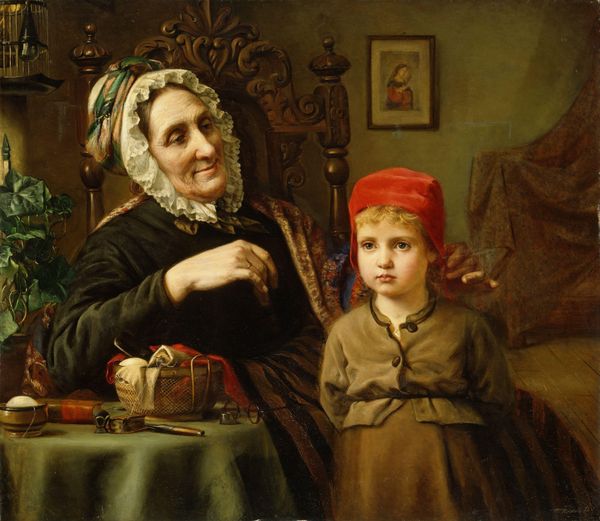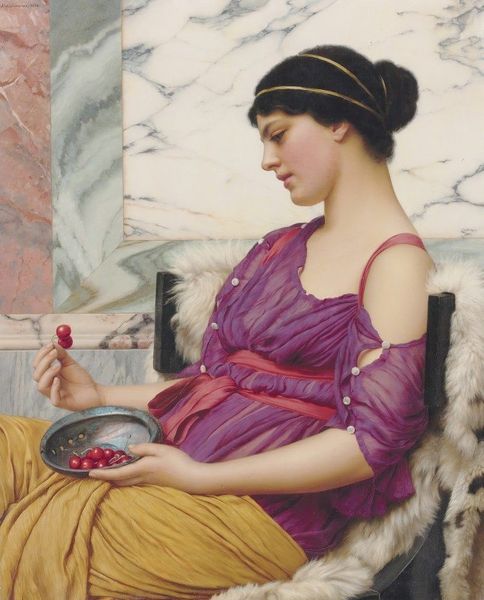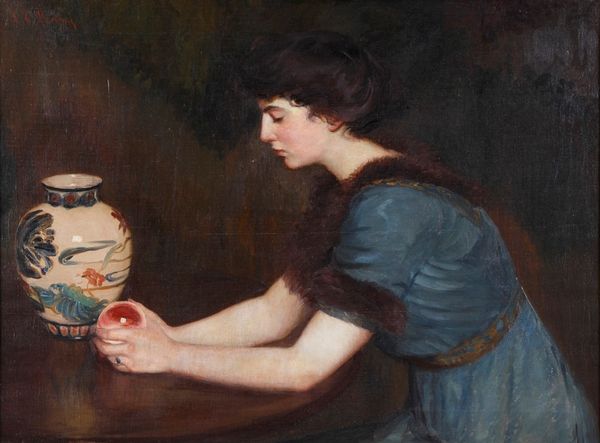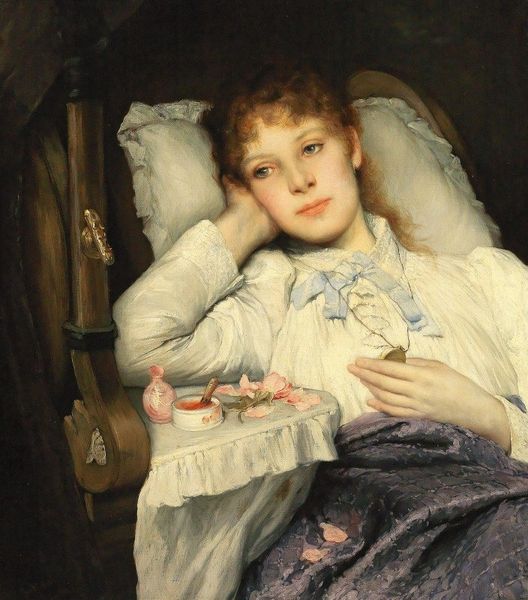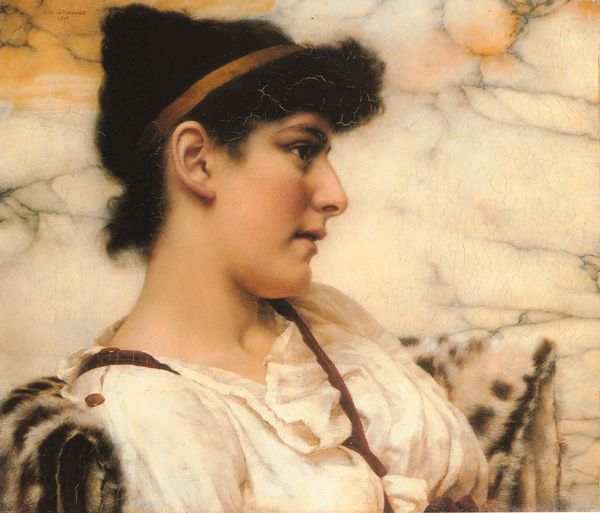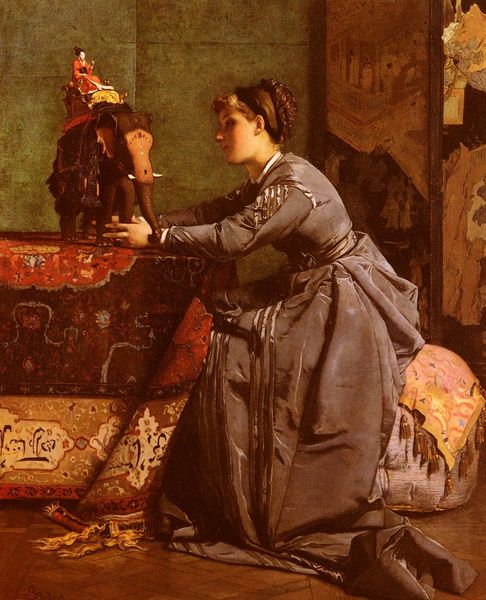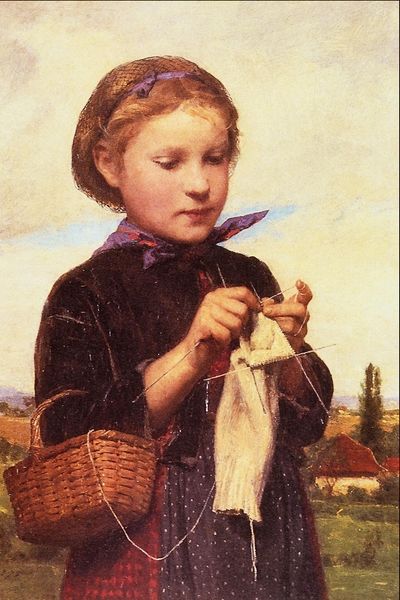
painting, watercolor
#
portrait
#
painting
#
watercolor
#
genre-painting
#
academic-art
#
portrait art
#
realism
Copyright: Public Domain: Artvee
Curator: Here we have Albrecht Anker’s “Strickendes Mädchen,” or "Knitting Girl," a watercolor painted in 1910. What's your initial take? Editor: It's interesting, isn't it? My immediate impression is a feeling of quiet diligence. She looks so absorbed, so focused, and for a moment, the world fades away. But in a gentle way, a bit wistful even. Curator: The very act of knitting carries deep symbolic weight. Think of Penelope weaving and unweaving her shroud – a potent symbol of waiting, of warding off suitors. In this portrait, though, the symbolism feels more straightforward. Editor: I suppose. The girl's very presence anchors the scene in a certain time, a slower pace of life. It’s amazing how this humble task seems to bridge centuries! I could get lost just watching her for a while, really. But what can it mean for the author? I mean, do you believe Anker felt nostalgia himself, maybe, for simpler times? Curator: Anker frequently depicted children, especially girls, often in these quiet, domestic scenes. He captured a kind of unadulterated innocence and virtue, idealized images. As to why, these kinds of scenes were commercially successful. Editor: Success doesn't negate genuine emotion! Look at how skillfully he renders the light on her face, the slight blush. It seems more affectionate than just a commercial venture, but also somewhat stylized. Her braids and her focus seem somewhat too perfectly positioned; is that on purpose to make her more appealing, do you think? Curator: It's important to consider the context of Academic art and realism at the turn of the century. These styles sought a specific kind of truth, one that highlighted moral narratives as well as photographic accuracy. The carefully arranged elements are deliberate, yes, to draw the eye and evoke a particular feeling, as the genre wanted, perhaps not to replicate some natural setting. Editor: So, perhaps the knitting here serves as a symbol not just of industry but of a more innocent, virtuous time that may not ever have existed quite like this! Very intriguing! Curator: Precisely. That idealized image continues to hold appeal. It’s a visual anchor connecting us to deeply held beliefs about childhood, diligence, and tradition. Editor: It all comes back to that careful stitching, both in the yarn and the artistry itself! Thanks for highlighting all of this for us today!
Comments
No comments
Be the first to comment and join the conversation on the ultimate creative platform.
